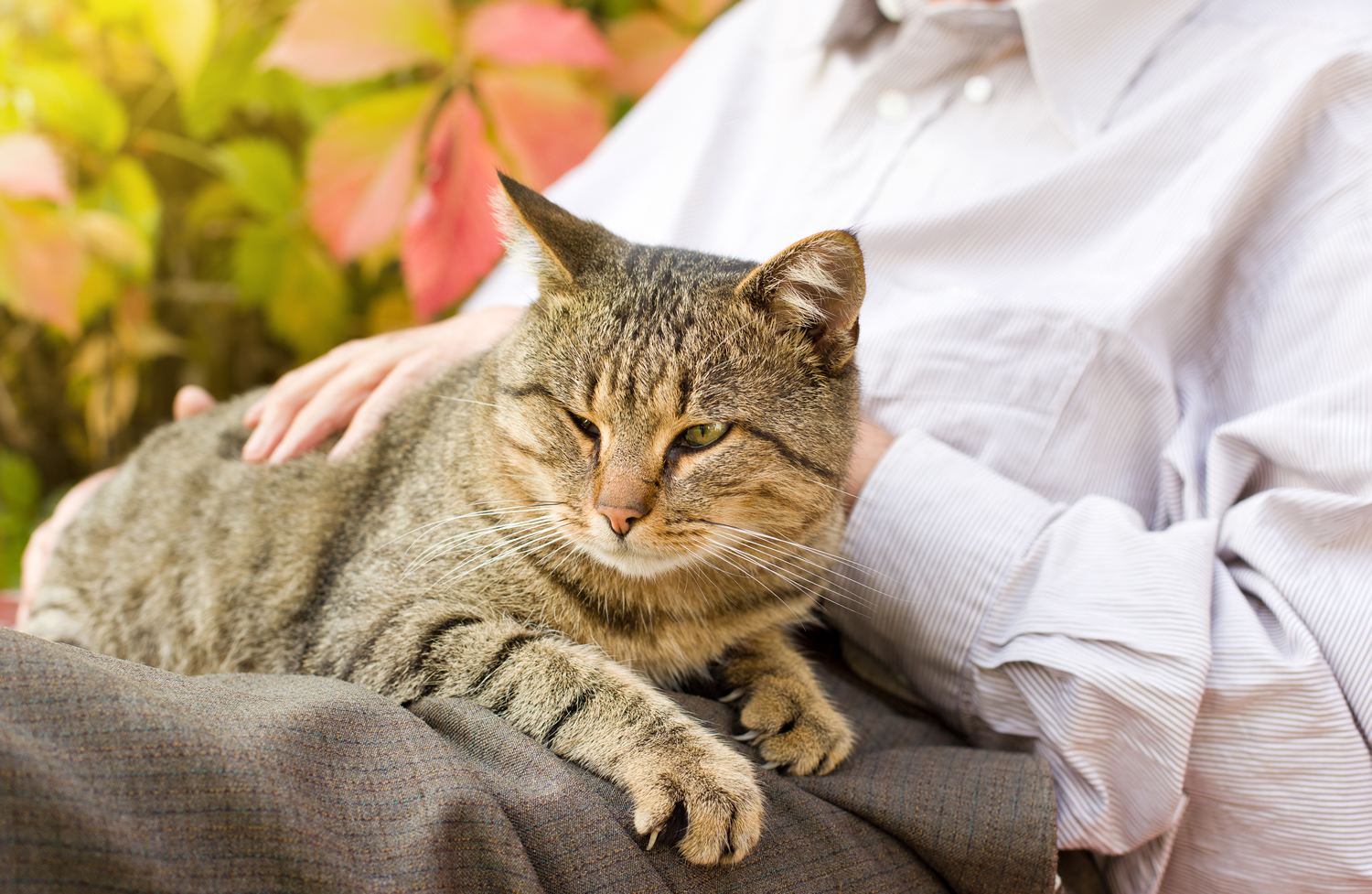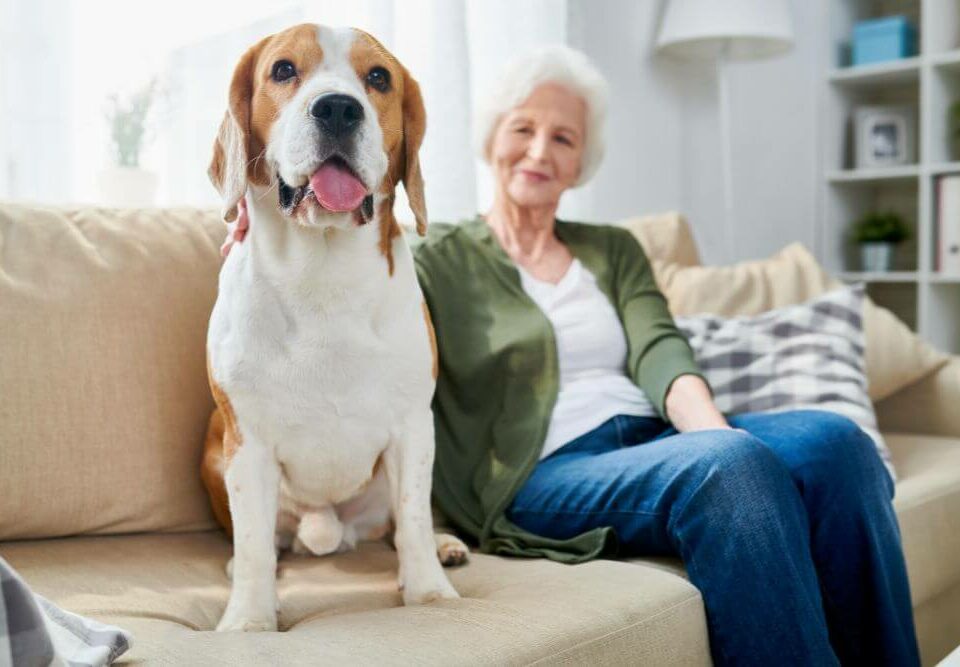
Looking after Senior pets (Part 2)
July 27, 2022
My Cat is Sleeping More, What Does This Mean?
October 19, 2022
Home help for the aging pet
As your pets get older you may consider how to make your home more comfortable for them as they age. They may have given you ten or more years of unconditional love, larks and frivolous laughter, probably asking for very little in return, except for a pat on the head and a place to lay their head at night. As your pet enters their twilight years, their needs are likely to change somewhat; they will require a slower pace of life, more attention to their comfort, and to their evolving mental and health needs. In view of this it time to think about how you can make your home more comfortable for your older pet. you can make small changes to their home environment, which in turn, will have big impacts on their quality of life. Consequently, we’ve got some great tips that will help you do just that!
Heaven-sent slumberland
Think supportive bedding here. Old bones and stiff joints appreciate soft, yet supportive padding, away from drafts which can worsen the effects of arthritis. In addition, orthopaedic and foam mattresses are readily available for cats and dogs and they can really help put the spring back in their step.
Bolthole breakaways
Creating hidey holes away from other, younger, more boisterous pets (and even children) allows the older animal a little down time that they will likely desire. Let them recharge their batteries in peace, and re-join the fun in their own time, for a truly rested and happy companion. A space under the stairs, a crate, somewhere up high (for cats), even a modified cupboard; somewhere they can come and go, uninterrupted, stuffed full of comfy bedding and their favourite toys.
Access all areas
Modern flooring such as laminate is super hygienic and convenient for keeping clean, but it isn’t half slippery for old pets who lack the muscle strength to keep their legs straight. Slipping and sliding, with legs flailing all ways, plays havoc with sore, arthritic joints which benefit from even, predictable movements. The solution? Non-slip mats. Placing non-slip mats along all of your pet’s usual routes will help them get about their home with ease: to their food bowls, to their bed, to the garden, to the sofa etc. This little hack can undoubtedly make a world of difference.
And then there are steps to climb, car boots to jump in, and sofas to jump on; this is where ramps become your old pal’s best friend. The commercially available type, or a home-made version, a simple slope can help your pet live their life the way they always have.
Easy eating
With old age often comes stiff joints and less supple and strong muscles. This can make bending, stretching and jumping more taxing. Pets sometimes even appear to ‘go off’ their food. Occasionally it may only be a logistical issue; they simply find it too much effort to bend or jump for their food bowls. Hunger and dehydration ensue. Reaching low to get at bowls at floor level puts stress on the neck and forelimbs which can be painful. Purpose-made raised food and water bowl frames are available to solve this issue, however, a few sturdy books do a good enough job too. Some cats are fed on work tops (out of reach of other pets and children), which takes a great deal of jumping power for an elderly kitty. Consequently, feeding these guys at floor level is a simple fix.
Small space, big adventures
The world can become that little bit smaller for pets as they age; dogs can no longer manage 5 mile adventures like they used to, and cats might not go exploring large territories like they once did. It doesn’t mean they don’t crave mental stimulation. So how about making their home more entertaining for them? Additionally, there is a whole plethora of toys available these days that help keep a pet’s mind sharp without exhausting a tired old body. Overall, we recommend looking into these for any pet who can’t run and jump like they used to.
Consider the garden too; is it safe for your pet? Chiefly, is there a pond they might fall in to? Are there sharp objects or areas they could become trapped? And could you plant some cat-friendly plants that felines could enjoy sniffing and rolling in? A quick Google search can deliver any number of gems on this front; think along the catnip, cat thyme and oatgrass lines here.
Continuity of environment
For some aged pets, a degree of confusion will begin to set in, and these guys really appreciate their environment, on the whole, remaining the same. If at all possible, reconsider any planned major refurbishments that could unsettle an old companion who takes comfort in the familiarity of their home. Even moving furniture around can disorientate. Certainly, keeping sleeping, eating and leisure areas constant for an old pet can really help maintain a sense of stability.
Feline specific things
A couple of extra hints here include changing cat litter to a softer substrate if you’re using something which is hard, lumpy or gravelly under paw. Arthritic joints in the paws can struggle to negotiate these coarse substrates and you might find that your cat avoids using their tray altogether. Also, if the tray has high sides, this may become an obstacle to stiff jointed kitties, so maybe look for a replacement with lower edges.
Cat flaps can become problematic if they are heavy or small or awkward to use. Cats just aren’t as agile or flexible in their twilight years and they might struggle to use them. You might find a better alternative, or you might need to rethink the in-out regime altogether.
We bet owners of older pets come up with other ingenious ways of caring for their beloved companions all the time because it is very much about the individual. Above all, however you help yours, we wish your pet the very best in their ‘retirement’.
Contact us if you need any advice about your aging pet.




